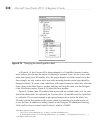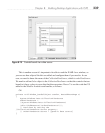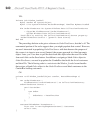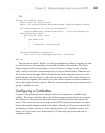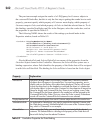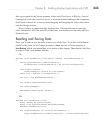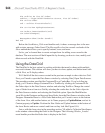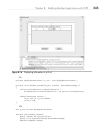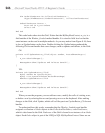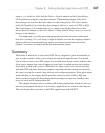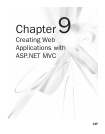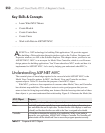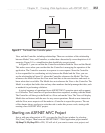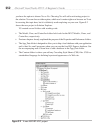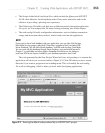
246 Microsoft Visual Studio 2010: A Beginner’s Guide
Dim OrderViewSource As CollectionViewSource =
CType(FindResource("OrderViewSource"), CollectionViewSource)
OrderViewSource.Source =
From ord In m_ctx.Orders
Select ord
End Sub
This code loads orders into the Grid. Notice that the MyShopDataContext, m_ctx, is a
field outside of the Window_Loaded method handler. It is raised to field level so that the
same instance can be used in multiple methods. As you may notice from Figure 8-16, there
is also an Update button on the form. Double-clicking the Update button produced the
following Click event handler that saves changes, such as updates and deletes, to the Grid:
C#:
private void UpdateButton_Click(object sender, RoutedEventArgs e)
{
m_ctx.SubmitChanges();
MessageBox.Show("Updates and Deletes Saved!");
}
VB:
Private Sub UpdateButton_Click(
ByVal sender As System.Object,
ByVal e As System.Windows.RoutedEventArgs)
Handles UpdateButton.Click
m_ctx.SubmitChanges()
MessageBox.Show("Updates and Deletes Saved!")
End Sub
When you run the program, you can add new rows, modify the cells of existing rows,
or delete a row by selecting the row and pressing
DELETE on the keyboard. After making
changes to the Grid, click Update, which will call the previous UpdateButton_Click event
handler.
To understand how this works, remember that the Window_Loaded event handler
assigned a collection of Order objects to the CollectionViewSource, orderViewSource,
which is data bound to the Grid. Each row of the Grid is bound to an instance of an Order
object. Each Order object is part of the LINQ to SQL MyShopDataContext. Since we are



